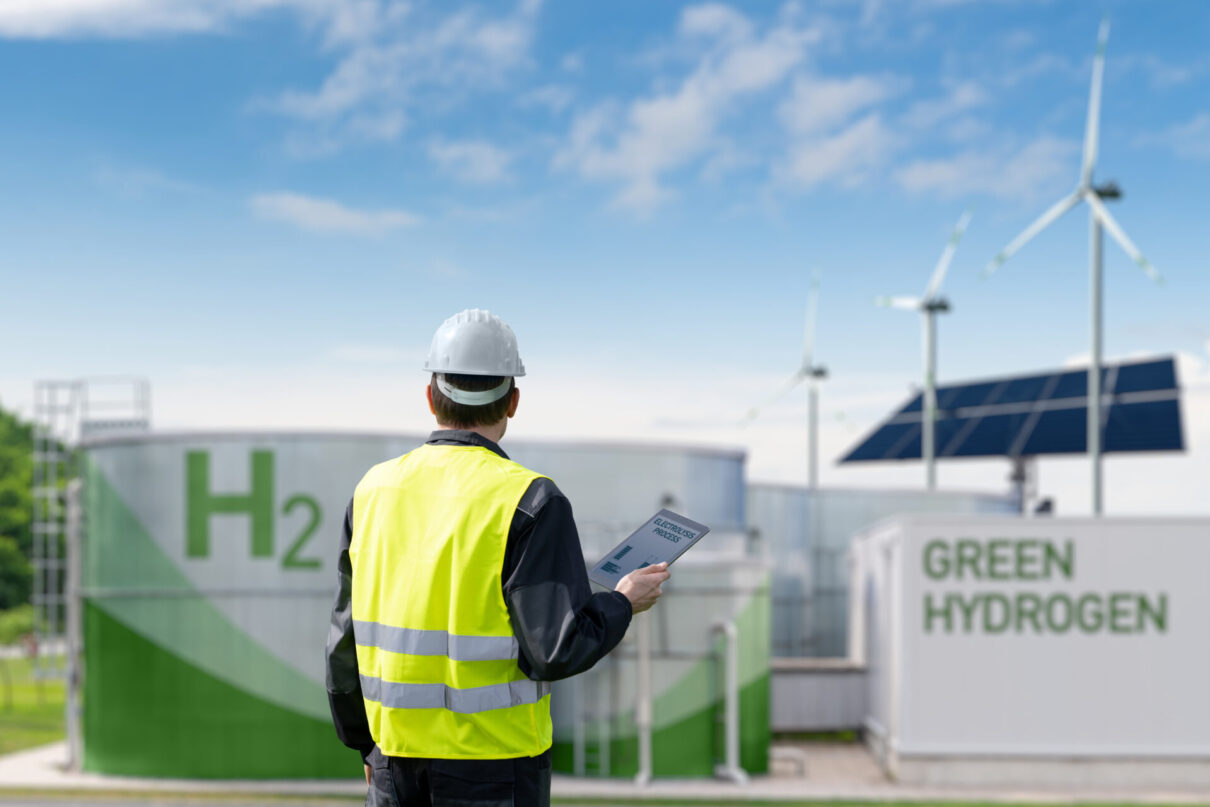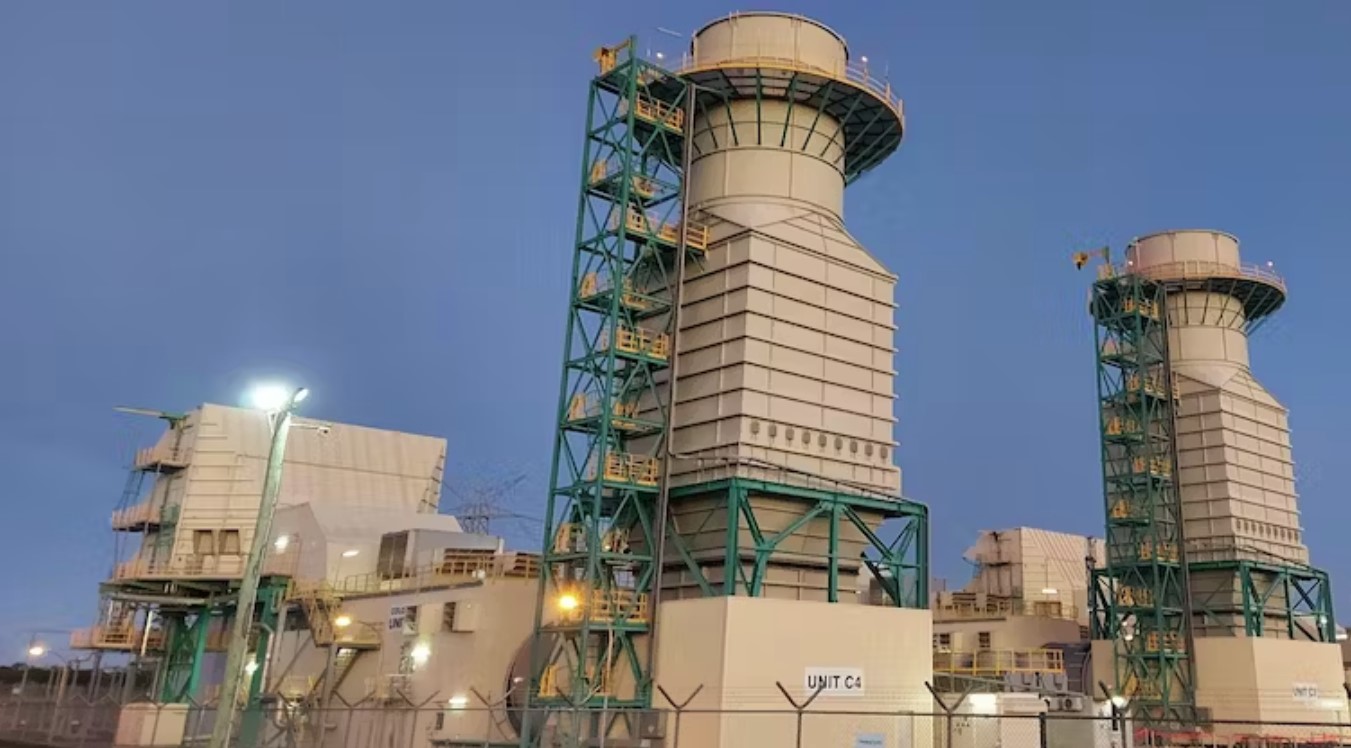Why are gas companies trying to sell us hydrogen?

The hydrogen dream has become widespread in the Australian climate conversation: apparently, with it, we’re going to decarbonise Japan, Korea, and the world! Is this ambitious vision a genuine step towards a greener future or merely a diversion from ongoing fossil fuel expansion?
Chris Bowen proclaimed in his Annual Climate Statement to Parliament last week, Labor’s “ambitious plan to become a renewable energy superpower.”
This week, he and billionaire Andrew Forrest are spruiking Australia’s hydrogen plans to the world.
Unfortunately, this talk of becoming a “renewable energy superpower” is largely a smokescreen for continued fossil fuel extraction, boosting profits for the gas industry.
The idea behind the proclamation is that Australia will become a “superpower” by producing and exporting vast quantities of green hydrogen, which will replace fossil fuels in transport, industry, heating, and cooking.
The hydrogen dream has become widespread in the Australian climate conversation: apparently, with it, we’re going to decarbonise Japan, Korea, and the world!
But to make green hydrogen, you need vast amounts of renewable energy. To put it bluntly, Australia has a slim chance of building enough renewable energy to meet our domestic needs and Buckley’s chance of installing enough renewable energy for us to be a major exporter of hydrogen.
Australia currently generates about 16 GW of power through wind and solar. To meet our existing decarbonisation targets, we need to add 57 GW of renewable generation by 2030. We are not on track. In this context, proposals for Australia to produce large amounts of green hydrogen are mere fantasies. Just two of the largest proposed projects would need 76 GW of renewables – more than all the renewable energy required to decarbonise our current grid.
According to AEMO, a mass hydrogen export industry would involve developing twenty-eight times as much renewable capacity as we currently have. It’ll be tricky to manage that and decarbonise the rest of the Australian energy system at the same time.
Another model estimated that our “renewable energy superpower” plan will need up to 2902 GW of solar alone by 2060. That is more than 90 times the investments Labor is currently pushing to achieve by 2030 and would require enough solar panels to blanket an area larger than New South Wales. It’s just silly.
Big plans for green hydrogen provide a nice distraction from the reality of Australia’s fossil fuel expansion. Don’t look at the 116 new coal and gas projects under development; we’re not just decarbonising Australia but the whole world!
If you cast your eye down the list of major hydrogen projects on the books in Australia, you’ll see that much of the support for hydrogen is coming from gas companies like BP, Origin, and Woodside.
This is because electrification – of cooking, heating, and transport – threatens the very existence of the gas and oil industries. Gas companies have invested considerable amounts in production and distribution infrastructures in Australia – $473 billion since 2010 – and want a return on their investments.
These companies fear electrification, and they are looking to secure their profits in the future. Hydrogen helps solve that problem.
Globally, about 99% of all hydrogen produced today is fueled by fossil fuels, generally gas (this is “grey” hydrogen, not “green” hydrogen). Large amounts of government subsidies are being poured into grey hydrogen projects so that one day, hydrogen could be produced with renewables. The government-owned Kurri Kurri power station is an example: it will run on natural gas until it can run on hydrogen. But it might run on diesel for a while first. Oh, and it costs $1.5 billion.

The green hydrogen dream of the future is driving demand for gas today.
The strategy is as straightforward as it is cynical:
- Boost the idea that hydrogen is a miracle future fuel that will power Australia and the world.
- Promise the hydrogen will soon come from renewables.
- Funnel subsidies toward fossil-fueled hydrogen projects, as “proofs of concept”.
- Lock in “hydrogen infrastructure”, which also happens to be gas infrastructure – like gas connections to homes, pipelines, shipping terminals and tankers.
- Make profit.
All while Australia delays and distracts from the need to stop expanding fossil fuel production.
It gets worse. Even if hydrogen was ‘green’, it’s hard to see how it can compete with renewable electricity stored in batteries.
Heating homes by burning hydrogen requires five times as much energy as using heat pumps powered by renewable electricity and is 2 to 3 times more expensive.
It isn’t much good for cars either. Hydrogen requires triple the power of batteries, triple the land, and triple the costs.
Hydrogen will also struggle as a liquid fuel. To transport the energy equivalent of one LNG tanker, you would need five tankers filled with hydrogen.
If green hydrogen is used to make green ammonia – kind of like a chemical battery – and that ammonia is burnt as fuel, then the end result is that only around 20 to 30 per cent of the original energy is available for final use.
Use in our decarbonised economy will likely be limited to fertiliser and chemical production and maybe for shipping. Solar, wind, hydrogen, and batteries are much better.
Hydrogen has a small but important role to play in a decarbonised world. Unfortunately, in Australia, it plays an enormous role in distracting the public from the reality of our fossil fuel expansion.
We ought to think carefully about who is trying to sell it to us and why.
Between the Lines Newsletter
The biggest stories and the best analysis from the team at the Australia Institute, delivered to your inbox every fortnight.
You might also like
What is the PRRT?
Gas extraction is often lauded by the industry as the ‘backbone of the Australian economy’, but the actual revenue collected from one of the main taxes on the industry falls staggeringly short of what most people would expect. Find out why this is the case – and what we can do to fix it.
The Climate Crisis is an Integrity Crisis | Polly Hemming
I am starting my address to this year’s summit in the exact same way that I started last year’s address. Because it is just over a year since I delivered these same words, which aren’t actually my words. They are the words of our Climate Change Minister, and they provide a baseline of sorts for what progress has been made in that time.
Coalition’s nuclear powerplay a “cynical distraction”
Rather than backing cheap and abundant renewable energy, Opposition Leader Peter Dutton has gone all in on nuclear.



